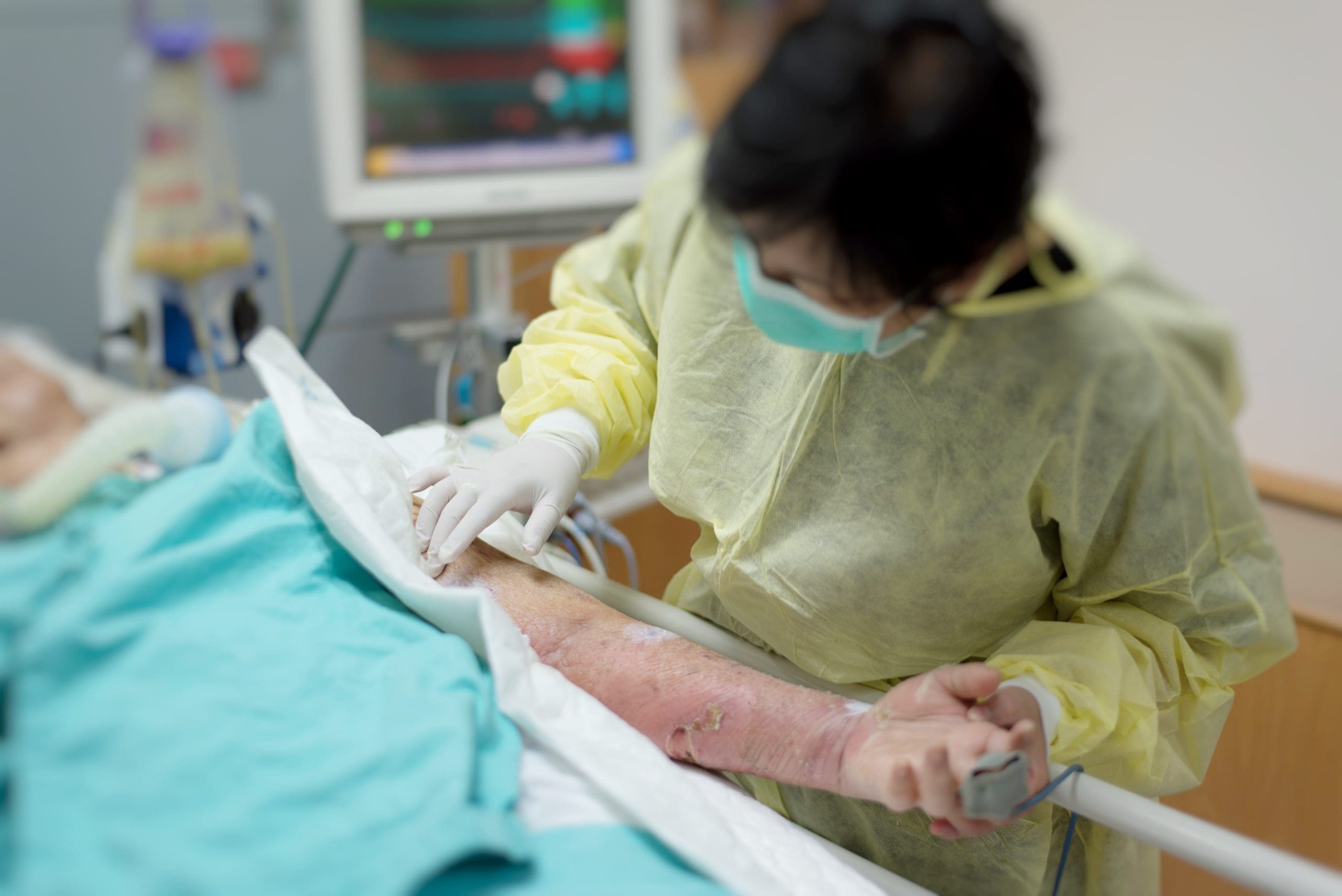A serious reaction requires immediate intervention.
- Vancomycin flushing syndrome is an anaphylactoid reaction caused by rapid infusion of the antibiotic.
- Signs of the condition include a pruritic, erythematous rash of the face, neck, and torso, which also may involve the extremities; weakness; and angioedema.
- Nursing interventions include close monitoring, regular assessments, and administration of ordered pain medications.
Shantae Demano*, a 62-year-old woman with a history of recent total left knee surgery, is admitted to the ICU with sepsis and an infection of the knee, which shows bruising and skin discoloration. She had been prescribed I.V. vancomycin after her surgery. In the ICU, the physician prescribes maintenance doses of I.V. fluids to decrease lactic acid levels, the antibiotic cefepime, hydromorphone as needed for pain, acetaminophen for fever, and ondansetron as needed for nausea.
During my initial assessment, Ms. Demano says she’s experiencing some moderate generalized pain and difficulty swallowing. Her lungs are clear, and her vital signs are as follows: RR 20 to 25 breaths per minute, O2 94% to 95% on room air, BP ranging from 120/87 mmHg to 140/87 mmHg, and temperature 99.5° F (37.5° C). On a scale of 0 to 10, Ms. Demano reports her pain as 7, so I administer hydromorphone 2 mg I.V. as ordered. She reports no nausea but feels that she’s getting worse.
On the scene
Within 3 to 4 hours, Ms. Demano’s O2 saturation decreases to 89% to 90%, so I place her on supplemental O2 and inform the ICU intensivist, who orders lab work. Results indicate a slightly elevated white blood cell count (14,500 per microliter).
I continue monitoring Ms. Demano’s vital signs, reassess her response to the oxygen therapy, assess her oral cavity for lesions and redness, and keep her with nothing by mouth. I also perform frequent oral care and skin assessments, turn and reposition the patient, and administer pain medication as ordered. A swallowing test and infectious disease consult are prescribed.
Outcome
Ms. Demano’s ability to swallow further deteriorates. She requires wound care; evaluation of the worsening generalized redness, bruises, and blisters that continue to develop and cause severe discomfort; and treatment for depression that has developed over the course of her illness. After 3 days of inpatient care, Ms. Demano is moved to a rehabilitation facility for ongoing wound care and to improve her mobility.
Education
Vancomycin flushing syndrome (VFS) is an anaphylactoid reaction caused by rapid infusion. It can occur immediately and systemically, mimicking anaphylaxis without IgE-mediation. Signs of VFS include a pruritic, erythematous rash of the face, neck, and torso, which also may involve the extremities; weakness; and angioedema.
Nursing interventions for patients experiencing VFS include close monitoring, regular assessments, administration of ordered pain medication, and treatment based on symptom severity. In most cases, an immediate reaction occurs within 4 to 10 minutes of initiating vancomycin treatment, but a delayed reaction can occur within several days.
All I.V. antibiotics, but especially those prescribed to a patient for the first time, should be initiated slowly to observe for any immediate reactions or abnormal signs and symptoms. Serious symptoms include shortness of breath, chills, fever, chest pain, and pinpoint red spots on the skin, which should be reported to the provider, who may stop or discontinue the medication. Patients receiving I.V. vancomycin at discharge should be instructed to follow up with their provider to check drug levels (both random and trough).
*Name is fictitious.
Angela Bonaby is an ICU nurse at Bethesda Hospital East in Boynton Beach, Florida, and a DNP student at Aspen University.
American Nurse Journal. 2023; 18(10). Doi: 10.51256/ANJ102326
References
Bladek C. Intraoperative anaphylactic versus anaphylactoid reaction. Int Stud J Nurse Anesth. 2022;21(1):40-3. ifna.site/app/uploads/2022/08/Vol.211-Spring-2022.pdf
Martel TJ, Jamil RT, King KC. Vancomycin flushing syndrome. StatPearls. January 25, 2023. ncbi.nlm.nih.gov/books/NBK482506
Patel S, Preuss CV, Bernice F. Vancomycin. StatPearls. March 24, 2023. pubmed.ncbi.nlm.nih.gov/29083794
Sellers AD. What is vancomycin flushing syndrome? Medical News Today. June 6, 2022. medicalnewstoday.com/articles/320833
Key words: vancomycin, vancomycin flushing syndrome, I.V. antibiotic therapy


















